Genre: Sports Developer: Technos Japan/Palsoft Publisher: Palsoft Players: 1-2 Released: 1992
If you want the Mardi Gras parade experience on the cheap, just get some bread and find a spot where you can feed seagulls from your car. My girlfriend and I really enjoy feeding the ones at the park, throwing bits of bread on the ground to spark impromptu feathered fight clubs or tossing them up into the air into their hovering beak mouths. It’s harmless fun, though I imagine the thick, squawking blanket which covers our car surely has passersby suspecting we’re being attacked a la some Hitchcock movie. Seagulls on the hood. Seagulls on the roof. Seagulls hovering just outside our window. There were like 200 of them out there yesterday, and my car had the poop stains to prove it. It’s great sedentary fun, nothing like the people playing soccer on the field across the parking lot. I say “people,” but it’s really just young girls out there on the fields running and kicking the ball around. I guess soccer moms have to come from somewhere.
I didn’t have a soccer mom to push me into an interest in the sport growing up, and apart from the big sponsored events like the genocide of Qatar, I don’t keep up with soccer much. Of course, when you’re playing fictional arcade style soccer games such as the Japanese Mega Drive import Nekketsu Koukou Dodgeball-bu: Soccer-hen MD, which is the focus of the review, it’s not really necessary. Nekketsu High School Dodgeball Club: Soccer MD is a Palsoft port of the original Famicom game which was released in the West as Nintendo World Cup. It’s part of Technos Japan’s long running Kunio-kun series of games, a franchise Westerners may recognize from River City Ransom and Super Dodge Ball, the latter of which Nekketsu High School Soccer is an offshoot, hence the “Dodgeball” in the title. A rather lengthy animated introduction (in Japanese, natch) explains this premise with the school’s soccer club manager, Misako, turning to Kunio’s dodgeball club for help.
If you’ve played any of these or other Kunio-kun games, then you already will be acquainted with the students of Neketsu High School, since its distinctive and goofy cast can be seen across most of Technos’ games. Your team’s six players are unique, posting individual stats which govern his play, something to consider as you can swap their roles (goalkeeper, defender, forward, and midfielder) before the match starts. The variety of players and their expressions are as wonderful to see here as it was in River City Ransom, and though there’s not quite as many exaggerated reactions in this game as in the Famicom original for some inexplicable reason, what’s present keeps the field lively. Slide into an opponent and watch him collapse, his large eyes parting from their sockets and like a busty woman on her back. Charge your special meter to literally set your player ablaze; exceed the charge limit, he’ll burn to a crisp, knocking him out for a few seconds. As with Super Dodge Ball, the game doesn’t take itself seriously, which is part of the appeal.
Understanding the power meter is critical to playing well. A charged shot will clear a path for itself through the field and minimize the chances of getting blocked. Each team has its own special move, and while Nekketsu High School’s club is limited to a rather unimpressive, generic “power” shot; other teams’ balls have the ability change direction, turn into a banana, or swim across the field. The meter also influences your defensive moves, allowing you to slide tackle across great distances to level the attacker before he can score. Beyond these special moves, basic controls will let you shoot, pass, jump, steal, and whatnot. The game controls well enough using the standard 3-button layout, although you may stumble into some actions inadvertently due to some moves relying on a combination of button and directional presses (such as launching a head butt when you meant to bicycle kick).
Oddly enough, the most striking feature of Nekketsu High School Soccer is the inability to select control of your teammates. As you make your way through the tournament, you’re only allowed control of your player character: the midfielder in one-player mode or either forward when playing with a friend. You can issue commands to get a CPU teammate to pass or shoot, but you cannot influence how the player interprets the order. You can adjust how they player pre-game via the coaching menus, but you can’t get them to hustle or use the full assortment of special moves as your controlled player can. This can be really off-putting, and it does prove to be occasional headache, but small field coupled with the teammates’ generally smart AI help. If anything, it forces you to play smarter with your own character and respect that soccer is a team sport. You’ll still be doing the heavy lifting, of course, but your teammates can’t be outright ignored as they can in, say, Arch Rivals, Pigskin 621 A.D., or any other arcade-y sports game.
The occasional lapses in control and teamwork would be more easily dismissed if the game didn’t become so difficult in the later rounds. Stupid ninja team is not only running rings around my poor dodgeball club on the field, but their special move – an incredibly powerful shot with a huge, sweeping arc – pretty much guarantees them the point any time they attempt a goal. That’s a spoiler, I guess, but it’s not much of a spoiler; each opposing team has a theme – gangs, fishermen, hunters, and whatnot — and of course a Japanese game is going to have a ninja team. Password saves and the short two minute halves gave me some hope I could endure the late gauntlet, but it’s pretty infuriating when you see an opponent’s shot cut right through four of your guys with barely a dent in its speed. Talk about over-powered. What starts out as a fun, lighthearted game of soccer eventually becomes an exercise in understanding which gimmick you need to exploit to gain and hold a lead.
The provided in-game field map is also lacking, only indicating where your player (and player two, if playing) is at on the field. It sorely needs some icons to represent other players not to mention the soccer ball itself. Kyuukai Douchuuki had the same issue, too. Do the Japanese not believe in the power of detailed, accurate maps? Is this how they managed to lose a whole decade? The vacant map can make actions such as lining up sliding tackles or avoiding rocks on the field from beyond the screen more difficult than it needs to be. Sure, the field is small by actual soccer standards, but it’s not as if you can teleport anywhere you need to be. Not even the ninja team can do that.
Most of these tournament headaches can be tossed aside while playing against a friend if only because you’ll both be contending with the same (minor) gameplay issues. Better yet, you can select from any of the available teams, a feature available only in this Palsoft port of Technos’ soccer game. Mega Drive does what every other console don’t. You also can select from any of the six field types which alter the game a bit. Some non-default fields just slow ball momentum, but rocks on the grass will trip players and ice will send sliding tackles clear across the field. The options screen also allows – and only allows, as it’s the sole option despite the plural name — for setting the game time from one to three minutes, which is a nice if rather bare bones selection to tailor the game a bit more to your liking.
The soundtrack is similarly limited, but the music present is excellent, particularly the rhythm section. I’ve always been a sucker for Genesis drums and bass. Palsoft did a great job with the Genesis sound chip, but I wish the developer would have taken some liberties with the set list as it did with the gameplay since this port copies the Technos original’s fondness of reusing the same song across multiple, consecutive matches. Apart from the control improvements here, Palsoft’s port closely matches the style and look of the Famicom original. Nekketsu High School Soccer and its Mega Drive cousin are full of broad, bright stripey fields, whereas the PC Engine ports are darker and dithered, making the sprites pop and giving the grounds a more realistic look. The PC Engine versions also have some extra details in the cinema scenes, a box on the locker, some extra house in the background, etc., which make me inclined to say it’s the best looking port, even if it’s not the one I’d want to be playing.
Nekketsu Koukou Dodgeball-bu: Soccer-hen MD may be the best overall version, but it isn’t quite as good as it could and should be, a statement which wouldn’t surprise most people given Palsoft’s history with the console. While the gameplay changes are certainly for the better, we’re still left with a cartridge which fails to impress. It lacks the added detail of the PC Engine port and, obviously, the sound quality of the PC Engine CD game. We’re missing quite a few elements from the Famicom original such as net movement on goals and additional character animations. Leaving so much of the brand’s personality on the cutting room floor in particular hurts this Kunio-kun title, and while the inability to control your entire time is an interesting twist for sure, there’s a reason so few games elect to go that route.
Nekketsu Koukou Dodgeball-bu: Soccer-hen MD just nudges ahead of the pack for being the overall best iteration of the Kunio-kun soccer game, barely overcoming its own failures and omissions with its more enjoyable (but not particularly great itself) gameplay and robust two-player options. Make sure you bring a friend though, because soccer is a team sport, and going it alone you’ll find yourself questioning if you should have just invited Misako to go to the park and feed the birds instead. At least the seagulls never disappoint.
SCORE: 6 out of 10

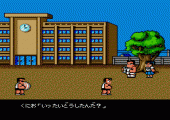
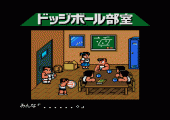
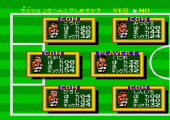
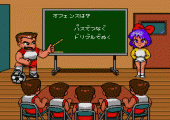
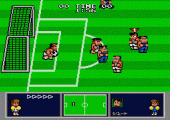
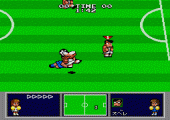
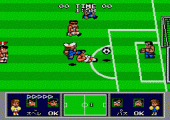
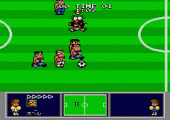
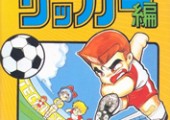
Recent Comments